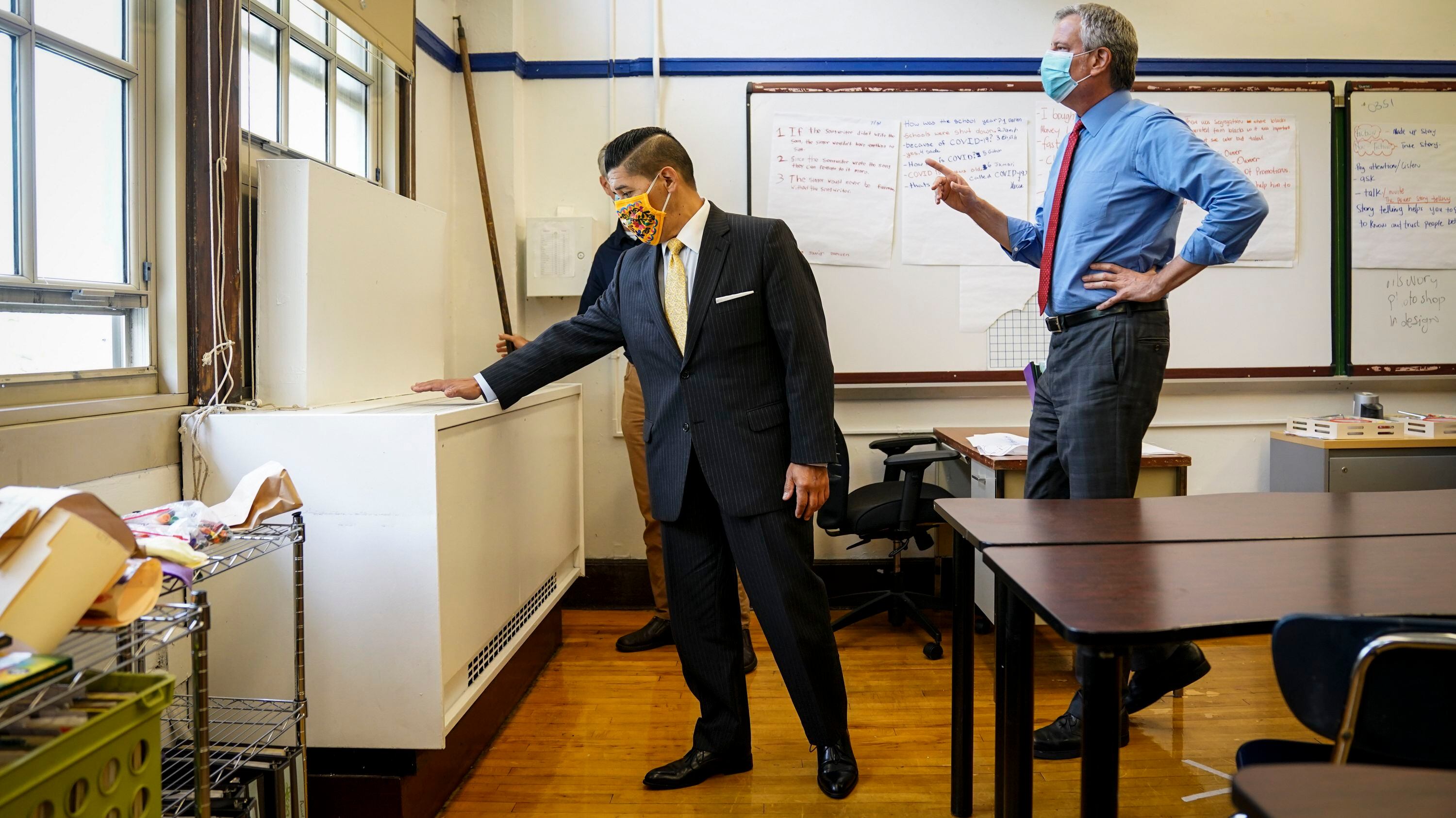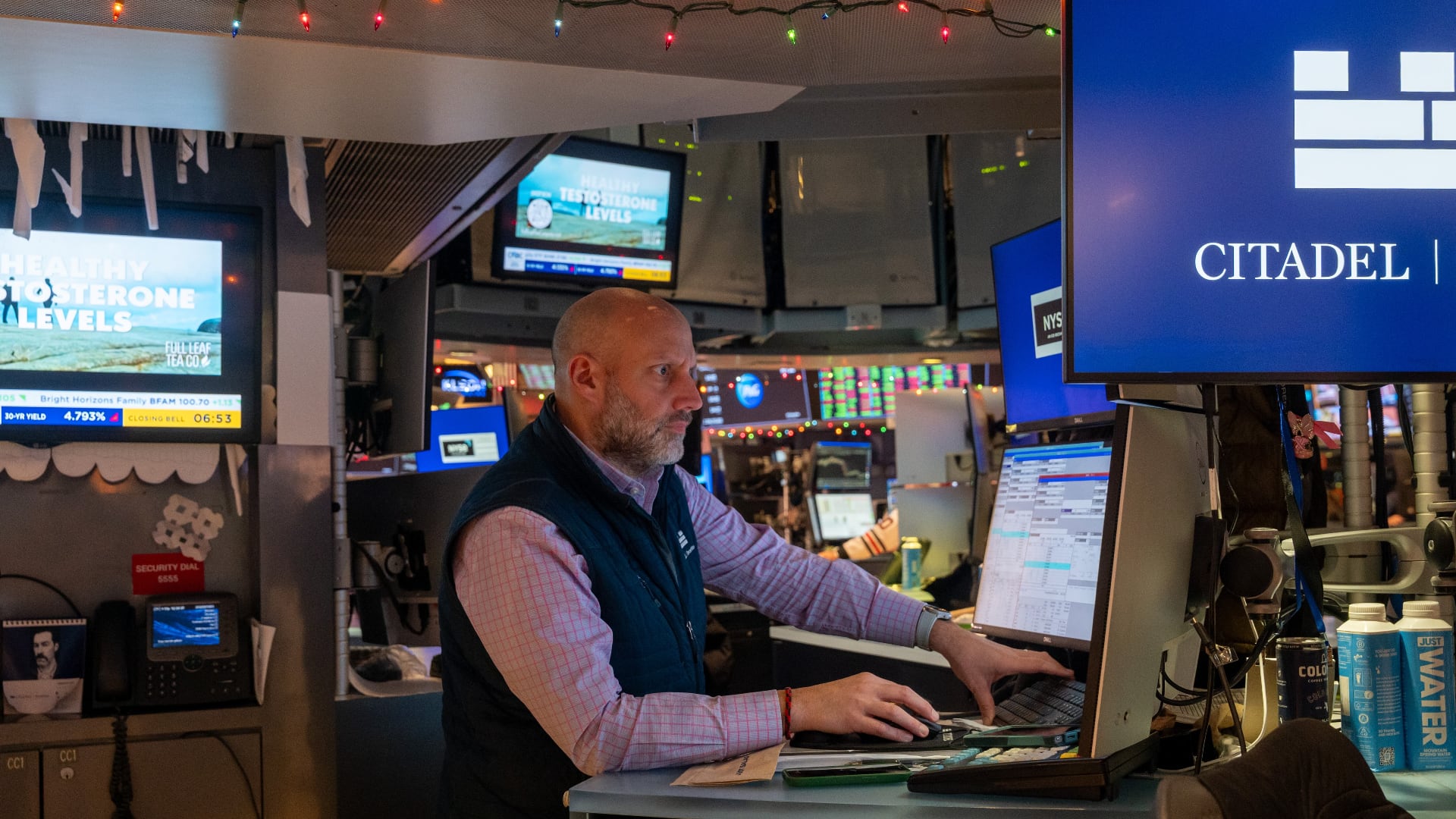There's a term public health experts sometimes use to describe the overwhelming focus on surface cleaning and disinfection that took hold in the wake of the COVID-19 pandemic: "hygiene theater."
While "deep cleans" were encouraged early in the outbreak, a scientific consensus has since formed that surfaces are less likely to spread COVID than airborne transmission. Accordingly, this places a greater focus on social distancing, mask-wearing, and better ventilation and filtration.
But some experts feel that companies, building owners, and individuals have been slow to adopt this way of thinking about prevention.
"It's unfortunate that the recognition of the importance of ventilation didn't occur earlier than it has, but at least it's starting to come to the forefront now," Charles Haas, an indoor air quality expert and professor of environmental engineering at Drexel University, told Cheddar.
It couldn't have happened soon enough. New York and New Jersey, former epicenters of the outbreak, are now in the process of reopening gyms, restaurants, movie theaters, and other businesses — indoor spaces that have been eyed as hotspots for infection since the beginning of the pandemic.
Figuring out best practices when it comes to preventing airborne transmission is inherently challenging though, especially when it comes to the technical aspects of retrofitting ventilation systems. Every type of building has unique weaknesses and strengths, and which interventions are necessary and feasible varies widely between spaces.
"It's so dependent on the design details that beyond specifying higher quality and higher rate ventilation and greater filtration, a lot is going to have to be dependent on what the physical bones of the infrastructure are," Haas said. "They can come up with generic guides, but, for the building owners to get to the level of implementation, there needs to be boots on the ground looking at those particular spaces."
Right now, those boots on the ground are heating, ventilation, and air conditioning (HVAC) companies that are tailoring solutions in real-time for individual businesses and buildings. Texas-based Sentry Air Systems, Inc. (SAS), for example, which designs and manufactures air purification systems, started working with dental offices as early as May.
"We had a big surge with dental offices," said Jeremy Idlebird, digital marketing manager for SAS. "They are like ground-zero for contracting COVID because you're dealing with a patient directly. If they have it, their aerosols are landing all in your breathing zone."
For those cases, SAS offered multiple solutions. One was a device called a Dental Aerosol Extractor that sits next to the patient's chair and essentially vacuums up particles as they come out of their mouth. Another was a free-floating air filtration system, meaning not connected to ductwork, that draws in and removes contaminants from the air.
These interventions are notable in that they are not modifications to a building's overall HVAC system. Instead, they offer a little backup in a localized area that may be more prone to coronavirus transmission.
Overhauling an entire system is a different caliber of intervention and one that often requires incurring significant costs.
Dan Diehl, CEO of Aircuity, a technology platform that helps building operators measure and assess air quality, explained that most buildings continuously recirculate air because taking fresh outdoor air and bringing it up or down to a regulated temperature is a huge energy — and money — suck.
"You heated it up so people are comfortable, and then you just flew it right out the roof," Diehl said. "You're losing a lot more energy to do that, but in an [operating room] or a lab you do that for safety and for cleanliness and for health, and they accept the additional expense."
The average office building, he added, exchanges air about once per hour, whereas an operating room can do it upwards of 20 times per hour.
Now coronavirus is forcing regular building operators to consider significantly raising their standards, and with it their costs, but incentivizing companies and property owners to invest in ventilation improvements has proven difficult without hard guidelines from agencies like the CDC.
"The biggest issue we're having right now is no one knows answers," Idlebird said. "Unfortunately, until the CDC releases more information, all we can do is give our best products that we've been able to prove work."
The wide range of potential needs makes this even more complicated. Some buildings are more prepared to make the adjustments in time for reopenings, while others are dealing with limited or badly maintained equipment, and they might not have the resources to fix or improve it.
"Some simple changes could be made," said Diehl. "But some buildings are going to be designed in a way that they're capacity-limited, so they would have to make system changes in order to move more air."
Diehl said his company is working with commercial property owners and major institutions to assess their portfolios to prioritize which buildings need to be upgraded first. He added that that knowledge is key.
"We're looking at some buildings and we're like, 'You're good. The air quality is great. You've got good filtration. You're bringing in tons of fresh air,'" he said. "If you do distancing and everything else, you're going to be fine. You can really broadcast to your people that you know what the air quality is in this building and bring them back and have them feel safe."
For the moment, the mid-Atlantic region at least has weather working in its favor.
"The easiest thing to do in this part of the country until the end of October is still going to be feasible," Haas said. "Open as many windows as possible. Get as much fresh air in as possible."



